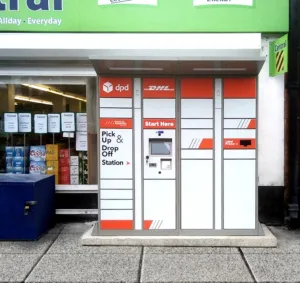By Delia Pedersoli, COO at MultiPay Global Solutions
The Covid-19 pandemic has fiercely accelerated the trend away from cash payments in favour of alternative payment methods. In particular, younger, tech-savvy millennial and Gen-Z consumers have been eager to embrace this change the world over. Not only do alternative payment methods increase options for consumers, but by giving customers more ways to pay, businesses and retailers make it easier to spend money with them.
One area that has seen an astonishing rate of growth in recent years are instalment payments like Buy Now Pay Later (BNPL) systems. Having arrived on the scene first in forward-thinking payments markets such as Sweden and Australia, and now increasingly popular across Europe, the US and worldwide, they show little sign of slowing down. Research data predicts that the global BNPL market will be worth over $20bn by 2028, growing at a CAGR of 22.4% from 2021 to 2028.
In the UK, BNPL is now the fifth most used ecommerce payment, ahead of direct debits and pre-paid cards. Research by Equifax suggests 30% of all 20 to 30-year-olds have used BNPL forms of credit, with 15 million adults across the UK using these services in 2021. This is a trend that was greatly boosted by the pandemic too. HM Treasury indicates that as the pandemic drove shopping online, the volume of BNPL transactions tripled in 2020. Offering improvements to the customer experience by allowing consumers to spread of the cost of large ticket items, instalment payments are increasing the choice and control consumers can enjoy.
Using BNPL to build better consumer experiences
For merchants, the upside of instalment payments is an increase in sales, as consumers can benefit from spreading payments into smaller amounts. Instalment payment schemes are a great way to increase average order size. Where previously a consumer may have bought just one or two items, being able to spread the cost of payment can encourage them to buy more items in one go. Equally, knowing an instalment payment scheme is an easy option with a retailer increases the ‘stickiness’ of consumers wanting to use such payment options and help convert them to a repeat customer.
For consumers, the advantages of instalment payments focuses on making it easier for consumers to pay in smaller chunks or take advantage of limited-time deals whilst they are available. Instalment payments can be seen by consumers as another product within their financial toolkit. In a similar way to how they view credit cards, instalment payment schemes allow the spreading of transactions and help enable smoother household financial planning.
Now increasingly available as a payment option from many online retail outlets, what does the future for instalment payments hold, and where does it go next?
Bridging the online and in-store instalment payment gap
Excitingly, the next frontier to cross is the offer of instalment payment options in-store. Already beginning to appear with some retailers, consumers increasingly expect instalment payments to be an option at checkout. Having become accustomed to them online and in early adopter retailers, there is a risk for other businesses that fail to adopt the technology in time.
Blending the instore and online customer experience, sales assistants can match the online experience and preference for instalment payment schemes in physical stores as well. Equipped with mobile payment terminals, sales assistants can roam the shop floor to complete customer
transactions, confirm eligibility and provide multiple, competitive, options for payment plans ranging from a number of weeks to months. Making instalment payment terminals mobile is a huge advantage to retailers wanting to increase the flexibility of their sales teams, especially with customers expecting quick queues and check-out processes.
Navigating BNPL regulation
Importantly, the UK Government announced plans to introduce new regulation surrounding instalment payment schemes in February 2021 with a public consultation closing earlier this year. How this will impact the growth of the market remains to be seen, however there will certainly be welcome moves to further aid transparency and the customer experience. Crucially, increased regulation indicates growing consumer appetite for instalment payment, and clear sign that they are here to stay.
Retailers need to react and ensure they are offering instalment payments that provide choice and control. As instalment payments evolve, they will soon be as commonplace as debit or credit card transactions. With relatively easy integration into current systems, having the right instalment payment approaches in place and the offer of competitive finance levels and multiple payment plans needs to be important point of consideration for retailers.







